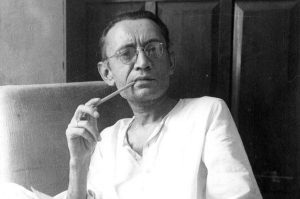Peace Watch » Editor's Take, Featured, Perspectives » My Bombay Days: Looking For Manto In the Island of Giants
My Bombay Days: Looking For Manto In the Island of Giants
Nostalgia
Island of Giants
ZGM
![]() The tinsel world of India has an intrinsic charm- a beauty that makes its distinct from any other metropolises in the sub-continent. Those, who adopt the city as their abode
The tinsel world of India has an intrinsic charm- a beauty that makes its distinct from any other metropolises in the sub-continent. Those, who adopt the city as their abode remotely move out of it. Those who live in it hardly forget about it. For many, like me, the city in all its shades rings like Dr. Faustus mesmerizing lines on seeing the Helen of Troy, ‘was this the face.’ Like a magnet to iron chips, it powerfully attracts one even from a distance and hugs strongly -hard to separate. It is not a bear hug but a beloved’s embrace that leaves a lasting scent behind. “I am a walking, talking Bombay. Wherever I happen to be, that is where I will make a world of my own,” wrote Sadat Hussain Manto, one of the greatest short story writers from Lahore in 1951.
remotely move out of it. Those who live in it hardly forget about it. For many, like me, the city in all its shades rings like Dr. Faustus mesmerizing lines on seeing the Helen of Troy, ‘was this the face.’ Like a magnet to iron chips, it powerfully attracts one even from a distance and hugs strongly -hard to separate. It is not a bear hug but a beloved’s embrace that leaves a lasting scent behind. “I am a walking, talking Bombay. Wherever I happen to be, that is where I will make a world of my own,” wrote Sadat Hussain Manto, one of the greatest short story writers from Lahore in 1951.
‘This giant of Urdu literature born in Kashmiri family of Amritsar had arrived in the city in 1936 to edit a film Magazine. He joined the All India Radio in 1941. After two years stint at All India Radio, the city that acknowledged talent, not caste, creed or color called him back, and he returned to Bombay in 1943 ‘to work with a group of friends at famous Bombay Talkies. In January 1948, he moved to Karachi to the capital of Pakistan – a newly created country by Mohammad Ali Jinnah, a barrister of unmatchable intellects who also had shot into stardom of Indian political struggle from Bombay. It is a known fact that he yearned for the city till his death. One would not say, this writer of ‘incarnated exuberance’ who was described by the New York Times, as “F. Scott Fitzgerald, who moved from north India to Bombay to sell his talents to the movie industry,” wanted to return for good to this city. The Bombay he lived in had radically under gone a social mutation that would be difficult to reverse. That had become obvious to him right in 1947. In his powerful memoir about his last days in Bombay dedicated to his life-long friend actor Shyam he candidly conveys it, quoting his friend Shyam he writes, ‘I told him, “I am a Muslim. Don’t you want to Kill me.” “Not now” he replied gravely, but I could have killed you.” Many others like Nida Fazli, Poet, novelist, lyricist born in a Kashmiri family joined these giants on the island city. I was lucky to have had an opportunity of meeting and knowing many of them from Sardar Jafari to Khawaja Ahmed Abbas.
Driving, through the Bhendi Bazar area, on many occasions, I was reminded of Manto’s collection of short stories titled ‘Bombay Stories.’ For the characters in most of these stories in this collection, it seemed that he had lived in this area- and I was curious to visit the area that had made him see life very closely and sea the house where the great story writer had lived his happiest days.. One, day to know, some details about Manto’s stay in Bombay, I visited another great short story Ismat Chughtai. She lived on second floor of an apartment in Indus Court building, Church Gate, at a walking distance from my office. I was first time introduced to her by Dogri poet Padama Sachdev. I had met her couple of times and interviewed her for a Bombay newspaper. Our conversation starting from Manto covered varied subjects from Kashmir, Sheikh Abdullah, Urdu writers in Bombay and future of Urdu language in India. Coming to Sheikh Abdullah and his association with Urdu writers, the writer of ‘lihaaf’ suddenly woke up in her and instead of talking bout Kashmiri leaders tryst with progressive writers she spoke about his manly beauty. She was disappointed and said the era of Urdu writers has ended- you will not have such galaxy of writers in Bombay as we had in the thirties, forties, fifties, and sixties. None of Urdu writers taught Urdu to their children- neither Kaifi nor I taught our children Urdu- how can Urdu survive.
It was some time later that learned when Manto arrived in the city seems to have lived in a room in the red light area of Arab Gully. Some years F.M. Hussain started painting posters for cinemas. After his marriage, he set up his first house in flat 17, B Adelphi Chambers Byculla area of the city.
Filed under: Editor's Take, Featured, Perspectives · Tags: My Dyas in Bombay, Sadat Hussain Manto, Z. G. muhammad







